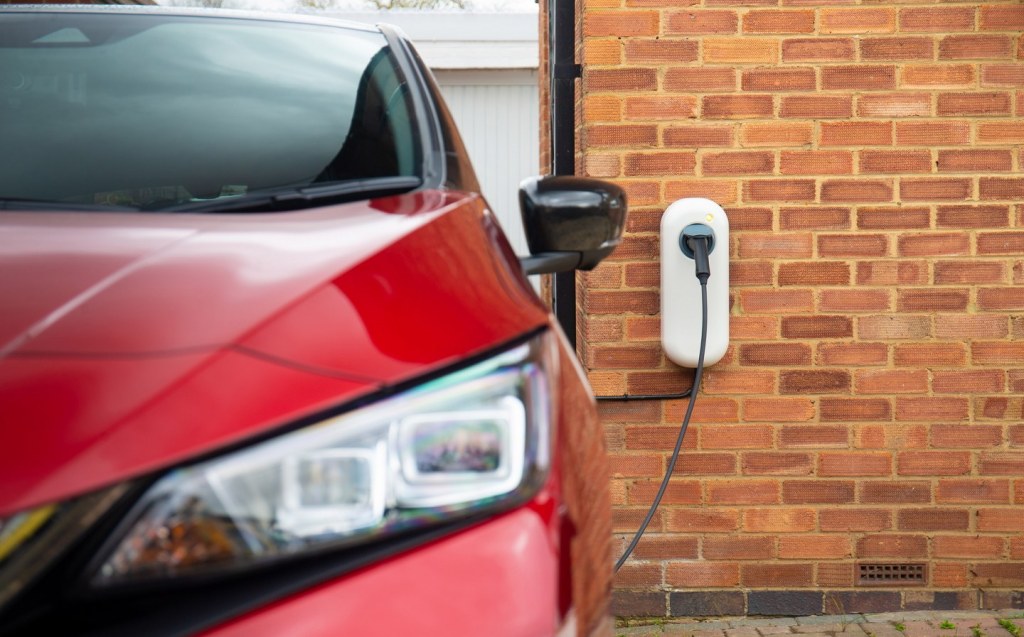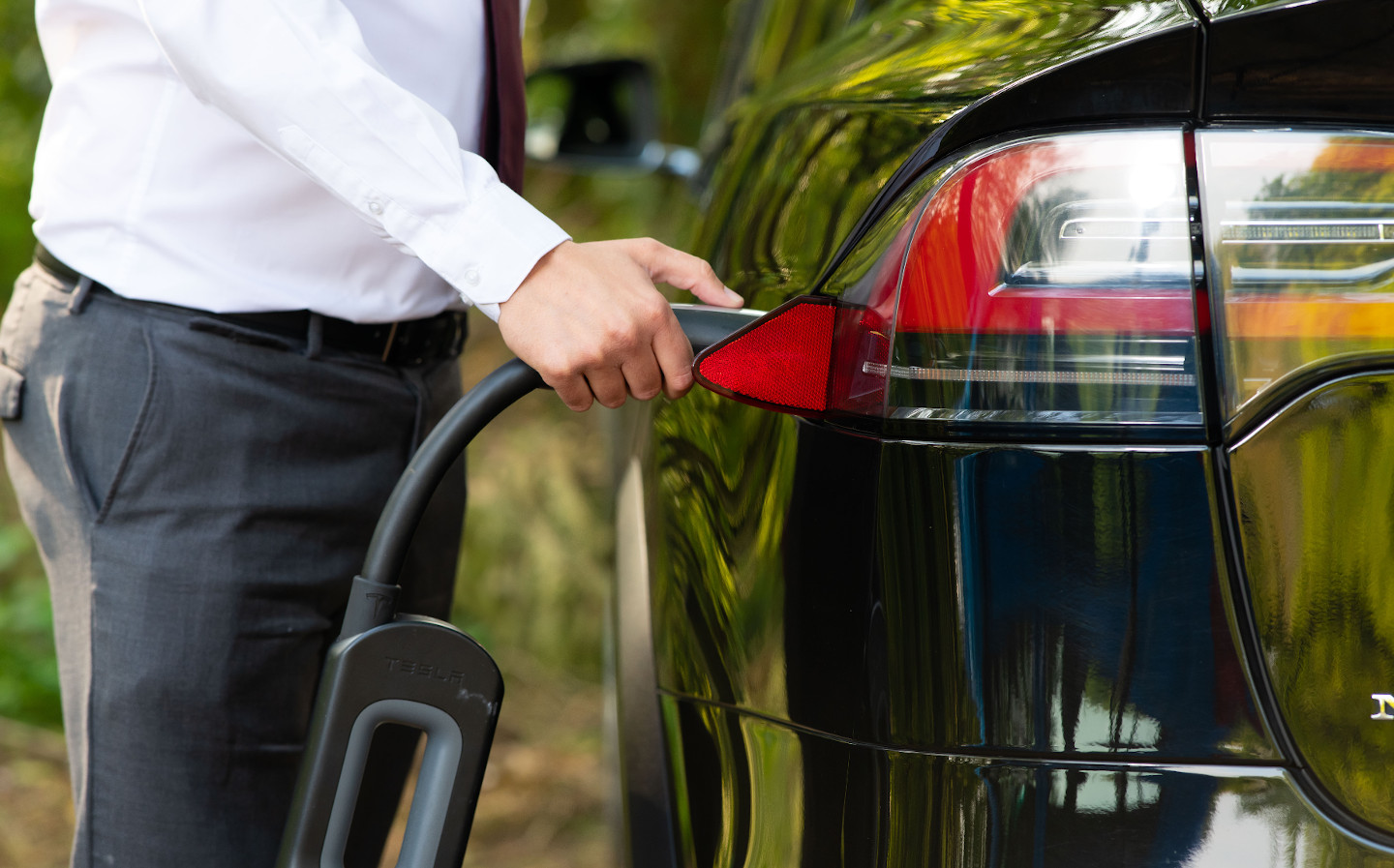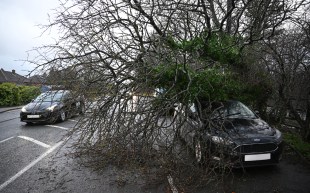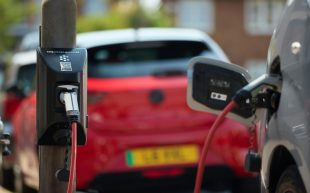How can people who live in flats install electric vehicle chargers?
There are grants for property owners and templated letters for residents
With some 85% of electric car owners charging their vehicles at home, but around 40% of UK households not having access to a garage or driveway, there are clearly a considerable number of potential EV drivers for whom it isn’t attractive at present to make the switch.
For a variety of reasons (most of which involve the impracticality or safety concerns of trailing an extension cable across a pavement or out of an upstairs window), those electric vehicle drivers who live in flats or houses without off-street parking have to rely on the public charging network in their area, which isn’t ideal.
For one, the public network — though improving all the time — is still patchy and has been described in some quarters as being a “postcode lottery”.
Secondly, public charging tends to be a lot more expensive than home charging and means that electric car owners don’t get the full benefit of lower running costs by using off-peak domestic tariffs.
Unless the UK’s public charging infrastructure continues to improve apace and the barriers to charging for those living in terraced houses or apartments are removed, it will be a lot more difficult for the UK to make the transition to battery-electric cars ahead of the government’s ban on the sale of new petrol and diesel cars in 2030.
Happily for current and potential EV owners who may live in flats, new legislation makes it mandatory for all new builds to include a sufficient number of EV chargers to meet residents’ requirements.
For those who live in older apartment complexes, there are also grants available for the installation of new chargers, which can take some of the sting out of the cost.
New build homes must have chargers built in
On June 15 2022, despite lobbying on the part of house-builders, new legislation known as Building Regulations Part S came into effect. This means that all new residential buildings, or those undergoing significant renovation, must have either one 7kW+ electric vehicle charging point per dwelling, or the infrastructure and cabling installed to enable a charger to be located there at a future date.
This applies to all buildings whether they be a one-off house or a large apartment complex.

Following the introduction of the new rules, a grace period was extended to building projects granted permission prior to June 15 running until June 15, 2023, meaning that any projects previously granted permission will not be compelled to install charging infrastructure if they break ground before the expiry of the grace period.
The new legislation is obviously very good news for flat-dwellers who may be planning to switch to an EV and will make it a lot easier to have a charger installed in future, but what about those in older buildings to which Building Regulations Part S doesn’t apply?
EV charger grants for older homes with parking
Electric vehicle drivers (or those who have ordered an EV) may be eligible for the Electric Vehicle Chargepoint Grant from the Office of Zero Emissions Vehicles (OZEV), which awards a 75% contribution up to a maximum of £350 provided the applicant meets the appropriate criteria.
Applicants must own and live in a flat or rent any residential property, with the dwelling having its own off-street private parking space.
Applications are administered by the company installing the charger with the firm discounting the awarded sum of the grant from its bill at the end of the installation process.

The grant is only for already-built properties; it cannot be used for new builds or unoccupied properties, and if you’re renting, you must seek the permission of the property owner before any installation commences.
If an installation requires cabling or other installation parts to be placed in or on another person’s property or public land, access rights and permissions must be agreed upon by all parties using legally binding arrangements before an installation can commence.
Any OZEV-approved charge point installation firm will be able to provide advice on just what kind of work needs to be undertaken to install a charger legally and safely in a flat complex, so it’s worth contacting one for an initial discussion and inspection of the property (which is often free). Recommended operators include Hypervolt, MyEnergi, Andersen, Pod Point, Ohme, EVBox and Wallbox, but there are many more.
However in some cases, especially if the building is older or the property manager isn’t co-operative, it may not be easy or feasible.
How difficult is it to install a charger in an older building?
An enormous number of factors — some technical, others interpersonal — can affect the feasibility of installing an electric car charger in an older building with a wiring system that wasn’t designed for EV charging.
Leases and property deeds may need to be altered to allocate all residents in the building a designated parking space, about which all residents may not be happy.
For complexes that don’t go down the communal charger route (which poses its own questions about just who pays the bill for installation), technical questions need to be asked about how an EV charger is specifically linked to the meter of the resident using it so that one resident isn’t paying for another’s use.
It may be a case that while the wiring infrastructure for the apartment complex is sufficient for ordinary residential use, it may not have the capacity to support EV charging without significant upgrades that the property manager and other residents may not be willing to undertake on the grounds of budget and disruption.
Incentives for property owners
For property owners and property management companies who are willing to install EV charging infrastructure, though, a grant of up to £30,000 per building is available for the installation of EV chargers and their required cabling, and it operates in much the same way as the Electric Vehicle Chargepoint Grant, with the installer making the application on behalf of their client and the size of the grant not exceeding 75% of the total bill.
Broken down, property owners can get up to £500 towards the cost of providing cabling infrastructure to a single parking space with a further £350 towards providing a charge point socket.
If you’re having difficulty persuading a property owner or residential property management company to install EV charging infrastructure in your flat complex, remember, there’s often strength in numbers. See how some of your neighbours feel about the prospect; after all, with more than a million electric vehicles now on UK roads, there’s a not-insubstantial chance that one or more of them may also be an EV driver, and a petition from many may be more effective than a lone voice.
And Pod Point has made things as easy as possible for residents, with this pre-written letter requesting charging infrastructure.
Related articles
- After reading how people who live in flats can get EV chargers, you might be interested to read about whether battery swapping is a good idea
- Even more EVs are in the pipeline as Lucid is launching in Europe
- And click here to see all the car makers’ electric vehicle plans
Latest articles
- Nissan unveils bold look for updated Qashqai, still made in UK
- British firm Bedeo launches new EV conversion kit for classic Defender
- New Citroën C3 Aircross gets electric power and up to seven seats
- Maserati GranCabrio Folgore is a 751bhp droptop luxury EV
- Five best electric cars to buy in 2024
- Skoda Kodiaq 2024 review: All new but business as usual for brilliant seven-seat SUV
- Dodging firebombs in the BMW i7 Protection: An electric limo that can protect you from big bullets and small explosives
- European court calls for car fuel economy test to be replaced after studies find large over-estimations
- McLaren P1 designer releases images of space capsule for tourists














